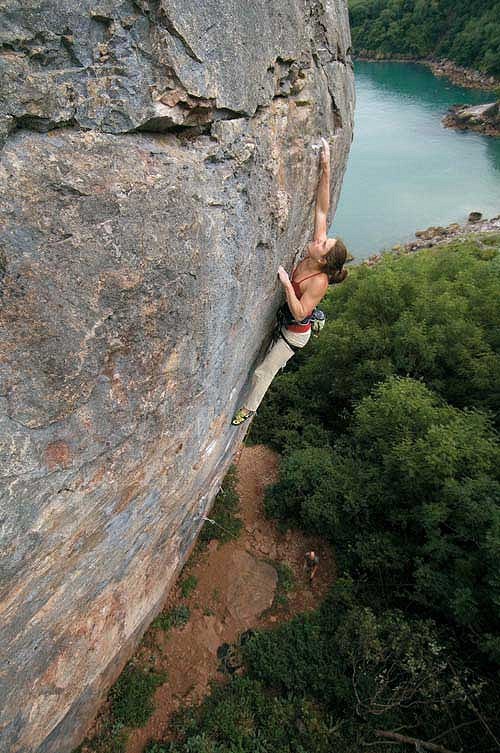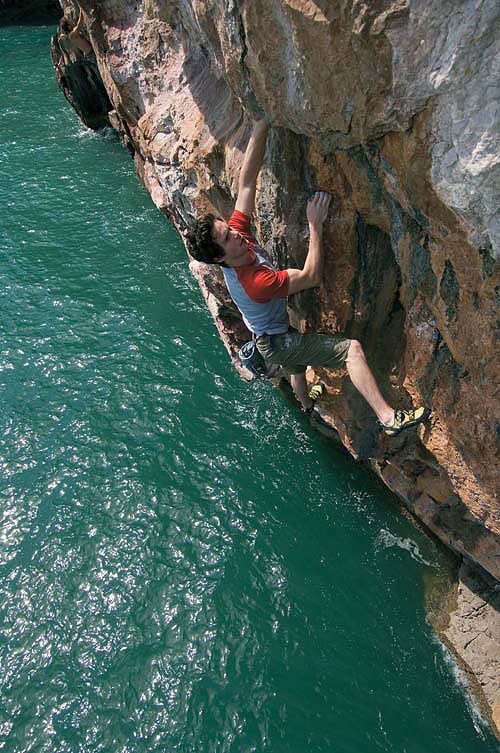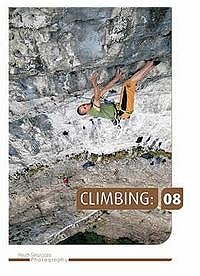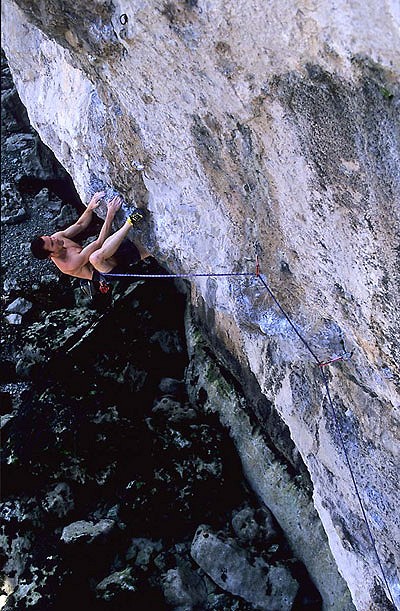


But what of the rest of UK Climbing PLC? As an island it comes as no surprise then that we Brits have a long tradition of climbing anything of any size on our coastline. These crags offer stunning locations and climbing, each venue with an ambience that is very special, if not unique. The biggest and most spectacular cliffs are north of the border; The Old Man of Hoy being perhaps the most famous coastline feature. Gogarth was tremendously popular in its early years and will always have a faithful fan club. Cornwall is even more old skool than Gogarth but who amongst us hasn't enjoyed a summer trip to climb at Bosigran? And by no means are these the only 'must visit' venues.
By late July and August of this year (2007 AD – Annus Deluge?) the monsoon eventually abated and I was in the throes of revisiting some of my favourite UK seaside climbing locations whilst finishing off the calendar. A trip to Lower Pen Trwyn, (a.k.a. LPT) North Wales reminded me what a superb venue it is. Ben Moon firmly established LPT on the map back in 1984 with his ascent of Statement of Youth (see photo below), the country's first bolt-protected F8a. And what a route to establish the benchmark grade. Flashed by Simon Nadin in the days when flashing F8a was incomprehensible, Statement should be on every sport climber's wish list. Heel hooking the lip of a roof is required to gain the real meat of the line, the upper headwall. The moves aren't excessively difficult (for F8a) but the crux is still challenging and interest is maintained, as they say in guidebook cliché-speak, right to the very top. Today, the routes at LPT span from the likes of Skin Flick (F6a+) to those with the sharpest of sharp cutting edges, i.e. The Big Bang (F9a) - ouch. It's always been a popular sport climbing crag and no wonder - the grade range, the route quality and the seaside location are irresistible. I photographed Neil Gresham on Chris Plant's The Battle of the Little Big Orme (F8a+). This route really deserves more attention and it would certainly get it at a lesser crag. After a powerful start, Battle turns technical and exhausting on the headwall. The backdrop across the bay includes Llandudno Pier and the Little Orme and really is picture-postcard stuff. I love that place; the atmosphere, the routes and the location – get thee there if you have yet to sample LPT's delights.

So there you have it; a quick spin around some of my personal favourite seaside climbing crags in the UK. The climbing on offer at LPT, Berry Head and Anstey's are right up there in terms of pure climbing quality. Each venue has its own distinct character and perhaps this is what makes them so endearing. Even better, they are the tip of the iceberg that is UK Climbing; it's this diversity that makes climbing here so appealing for many, myself included. If only the bloody weather was better! Ah well, there's always next year, that surely will be better! Meanwhile there's just the small matter of the winter to get through – now where's my Peak bouldering guide?

Cost: £12.99
The calendar comes with an A2-sized 2008 Year Planner which is printed back-to-back with a Poster which features Steve 'bat-hanging' McClure on his Malham testpiece, Overshadow (F9a+) and is supported by the Climbing FactFiles posted on his website.
A percentage of the proceeds from the sale of climbing:08 are donated to the Access and Conservation Trust (ACT) towards the cost of project work in the UK and Ireland.
Read another Keith Sharples article at UKClimbing.com, Steve Mac v's Big Brother, click here










Comments